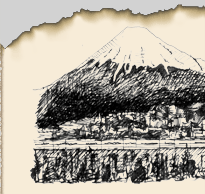Approximately in the 16th century a swan pan penetrated from China to Japan. Although here it got a name soroban, both these names are written with the same
hieroglyphs. This fact evidently proves that Japanese soroban has Chinese roots. Later through Japan this calculation device came to Korea (tschu pan) and Vietnam (ban tuan).
For a long time the soroban held the same shape: two beads above the bar and five beads below it. But in 1930 its construction was seriously optimized:
only one bead left in the upper half on each wire, - surely, that was enough for calculation. Besides, the soroban became more compact and its beads became narrower and with
sharpen edges. All these modifications allowed to speed up calculations.







